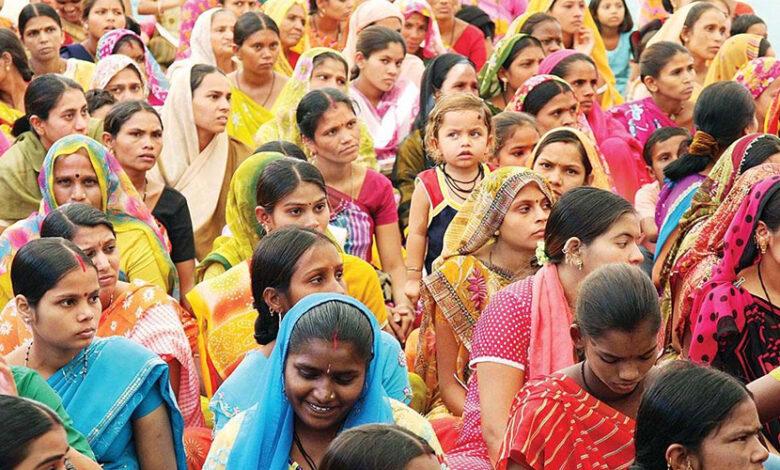
The United Nations designated March 8 as International Women’s Day in 1975. With this, countries around the world are reducing ongoing gender inequalities in political, social and economic spheres and officially recognizing women’s rights. The theme of this 2025 Women’s Day is “Accelerating the Implementation of Gender Equality”. It focuses on identifying strategies and tools that will drive women’s progress in education, employment and women’s leadership. Gender budgeting is essential for this. Gender budgeting is a budgetary approach that uses economic policy and governance to promote gender equality and the development of girls and women.
Countries around the world are at very different stages of economic and political development, and the status of women varies accordingly. By the late 1970s, a wide range of specific policy approaches had been developed in Australia to improve the economic and social status of women. This women’s policy mechanism was developed by those who were called “feminists” in the women’s movement. These feminists created a feminist presence in the field of women’s policy”. In this context, the first gender budget was introduced in Australia in 1984. With the belief that budgets are an important tool for promoting gender equality, pioneering analyses of the impact of public budgets on gender relations have been conducted.
The important benefits of gender budgeting include ensuring that government spending is equal for both men and women, reducing inequalities in areas such as education and health care employment, empowering women through resource allocation, achieving Sustainable Development Goal 5 on gender equality, reducing poverty, promoting economic growth, and increasing government accountability by making public funds transparent. Gender budgeting also faces many challenges. Notably, lack of political will, limited sex-disaggregated statistics, resistance to change, inadequate capacity and expertise, complexity of gender issues, ignoring the gender gap, lack of public awareness, budgetary constraints, short-termism, political instability, policy changes, etc.
When we look at the impact of gender budgeting in the world, no country has achieved full gender equality. No woman is safe from the threat of discrimination, harassment, and gender-based violence. Iceland (93.5%) continues to be the most gender-equal society in the world for the 15th consecutive year. Finland, Norway, New Zealand, and Sweden are next in the top 5 rankings. Europe leads the gender gap with 75%, followed by North America (74.8%) and Latin America and the Caribbean (74.2%). The Middle East and North Africa region ranks last with 61.7% in the gender gap. South Asia is ranked 7th out of 8 regions with a gender equality score of only 63.7%.
Gender Budgeting in India
Gender inequality in India is a multifaceted issue, primarily affecting women. When looking at the Indian population as a whole, women are disadvantaged in many ways. Although the Indian Constitution grants equal rights to men and women, gender inequalities persist. There is still work to be done to achieve gender equality. 77.8% of the legal instruments promoting, implementing and monitoring gender equality under the Sustainable Development Goal Indicators are in place, focusing on violence against women. 23.3% of women marry before the age of 18. As of February 2024, only 14.7% of seats in parliament were held by women. 18.4% of women aged 15-49 reported experiencing physical sexual violence by an intimate partner in the past 12 months. India ranks 129th out of 146 countries in the 2024 Gender Gap Report. India has narrowed the gender gap by 64.1% by 2024.
India’s commitment to gender equality, which began with the adoption of the Convention on the Elimination of All Forms of Discrimination against Women in 1993, led to the announcement of the first Gender Budget in 2005-06. In 2005-06, the Department of Expenditure of the Ministry of Finance issued a note on gender budgeting as part of the Budget Circular. Karnataka was the first state to present a gender budget to the legislature in 2007-08. States that have made significant progress in introducing gender budgeting to achieve gender equality in India include Kerala, Rajasthan, Tamil Nadu, Madhya Pradesh, Uttarakhand, Himachal Pradesh, Odisha, West Bengal, Chhattisgarh. Maharashtra, Bihar, Telangana.
However, more states need to strengthen gender budgeting to ensure that gender equality is mainstreamed in all spheres of governance. Gender budgeting is a broad exercise that requires progressive reforms in budget preparation. Here, resource allocation should be linked to the intended outcome. Delhi’s gender budget has increased from ₹10 billion in 2011-12 to ₹71 billion in 2024-25. The gender budget for the financial year 2025-26 in the Union Budget is Rs.4.49 lakh crore. This is only Rs.3.27 lakh crore in the financial year 2024-25.
Some key steps are needed to strengthen gender budgeting and make it more effective in promoting gender equality. Political commitment, leadership, better data collection and gender disaggregated statistics, regular monitoring, evaluation, capacity building, training, establishment of gender budgeting guidelines, promotion of civil society women’s organizations, public awareness campaigns, allocation of adequate resources, use of gender indicators, strengthening accountability, transparency, commitment to long-term goals, linking gender budgeting to national development plans, etc. are required. Only then will progress for women be possible.











